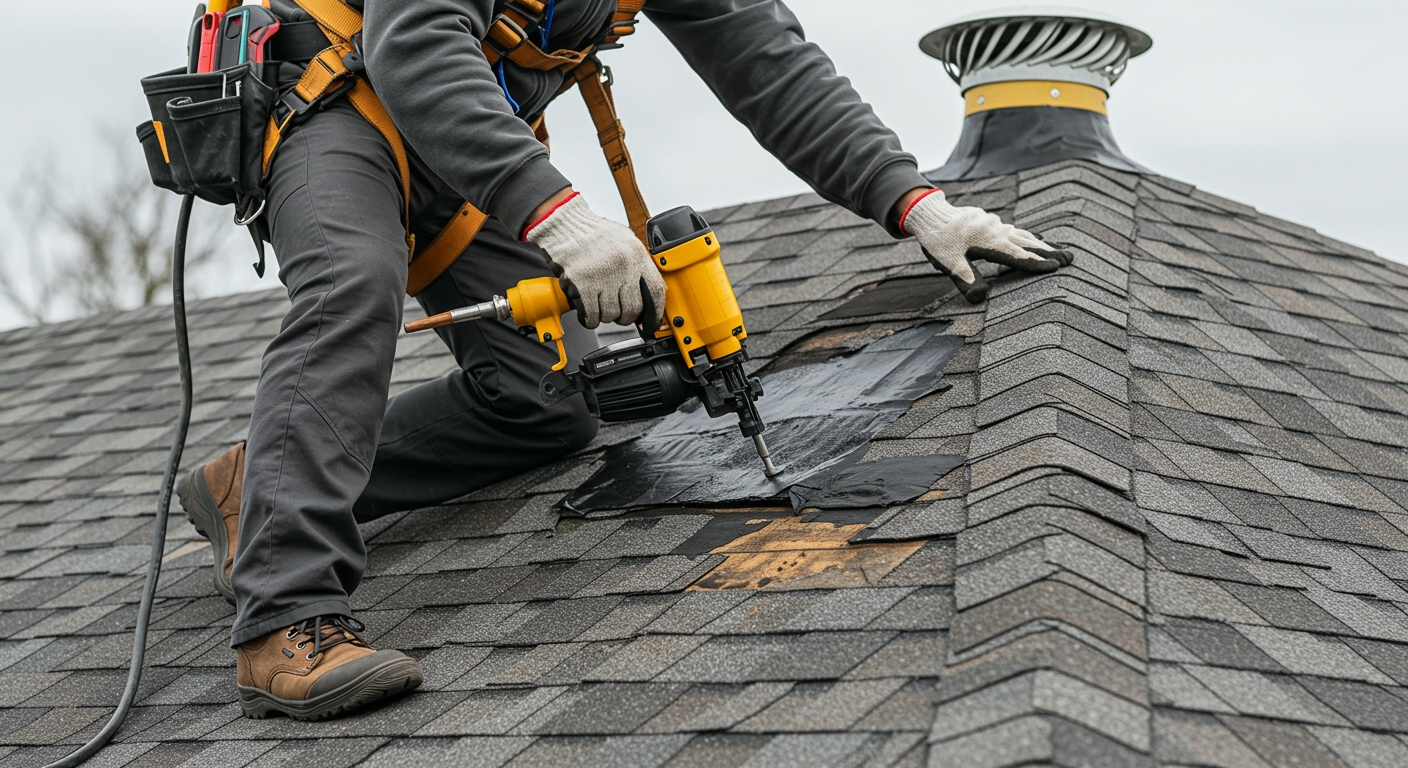When it comes to maintaining your property, understanding the different roof repair techniques is necessary. From emergency fixes to routine maintenance, various methods exist to ensure your roof remains in optimal condition and minimizes the risk of severe issues. This guide explores several essential repair techniques, helping you make informed decisions for the longevity of your roof.
Understanding Roof Damage
Before diving into specific repair techniques, it’s essential to understand the types of damage that can occur. Recognizing these issues early can help save time, effort, and money. Common types of roof damage include:
- Leaks: Often the result of worn tiles or shingles, leaks can cause significant water damage if left unattended.
- Missing Shingles: High winds or severe weather can dislodge shingles, exposing the underlying structure to harsh elements.
- Flashing Damage: Flashing is critical for protecting seams and joints. Damage here can lead to leaks and further deterioration.
- Structural Issues: Problems like sagging or warping can indicate structural failings that require immediate repair.
Common Roof Repair Techniques
1. Shingle Replacement
One of the most straightforward repair techniques is shingle replacement. If a few shingles are damaged or missing, replacing them can be a cost-effective solution. Ensure that the new shingles match the existing ones in color and material to maintain aesthetic appeal.
2. Flashing Repair and Replacement
Flashing plays a vital role in preventing leaks around critical areas such as chimneys and vents. Over time, flashing can suffer from wear and might corrode, leading to water infiltration. Flashing can be repaired by resealing or, in severe cases, replaced entirely to safeguard your roof. Understanding how to repair flashing can enhance the durability of your roof.
3. Leak Detection and Repair
Identifying and fixing leaks is critical to protecting your property from moisture damage. Experienced roofers utilize specialized equipment to locate and repair leaks efficiently. Techniques vary depending on the leak’s location but often involve sealing the damaged area or replacing affected shingles.
4. Patching Holes
Patching holes is another essential repair technique. Holes may be caused by debris or impact damage. Repairing holes involves applying patching compounds or replacing sections of roofing materials. This not only prevents water infiltration but also improves the roof’s overall appearance.
5. Structural Repairs
More serious issues might arise that demand structural repairs. If you notice sagging or warping, it’s vital to consult a professional to assess the extent of the damage. Repairing or reinforcing rafters and trusses often requires specialized knowledge and should be performed by experienced contractors.
6. Preventive Maintenance
Investing in routine preventive maintenance can save you significant costs in the long run. Regular inspections allow you to catch minor issues before they escalate into more serious problems. Cleaning gutters, trimming overhanging branches, and checking for cracked or missing shingles can extend your roof’s lifespan considerably.
Specialized Roof Repairs
Depending on the roofing material, specialized techniques may also be necessary. These include:
- Flat Roof Repairs: Flat roofs face unique challenges. Addressing issues like ponding water requires specific techniques such as re-sealing or applying a new waterproof membrane.
- Metal Roof Repairs: While durable, metal roofs can still crumple or develop rust spots. Repairs involve patching and resealing seams.
- Tile Roof Repairs: Repairing cracked or broken tiles can involve re-bedding or replacing individual tiles to maintain waterproofing.
Cost Considerations for Roof Repair
The cost of roof repairs can vary widely based on several factors:
- Minor repairs, like patching a few shingles, will be less expensive than extensive leaks requiring structural interventions.
- The quality of materials selected for repairs can influence costs. Investing in high-quality materials may offer better long-term value.
- Varying regional labor costs can affect your overall expenditure. It’s essential to get quotes from multiple contractors to ensure competitive pricing.
Finding Professional Help
When facing roof repairs, it’s best to consult with qualified roofing professionals. They possess the necessary expertise and tools to assess your roof’s condition accurately. Opting for a local contractor can also facilitate quicker responses, especially in emergency situations. You can check resources like myhome-id for reputable contractors in your area.
In summary, understanding the various roof repair techniques is crucial for maintaining the durability and integrity of your roof. Promptly addressing any issues, whether they are minor or major, ensures long-term protection for your home or business.
